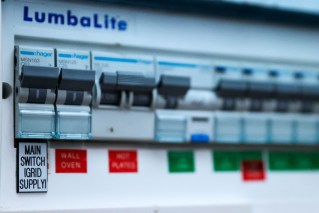Super changes to knock SMSFs from their perch


Super changes cut the attractiveness of SMSFs. Photo: Getty
The superannuation changes legislated by the Turnbull government in November will significantly cut the relative importance of self-managed super funds as sources of retirement income, new research has found.
Industry super and retail funds will be the winners, growing significantly in importance as providers of retirement incomes over the next 10 years, research group DeXX&R found.
Industry fund FUM/A (funds under management in pension mode) are projected to hit $148 billion in 2026, or 11 percent of total retirement income assets, compared to only 6 percent in 2016.
Public sector fund pension accounts are projected to reach $160 billion in total FUM. That will represent 12 percent of total assets in 2026, up from 9 percent in 2016.
Retail allocated pension account FUM is projected to reach $381 billion, or 29 percent of total assets by 2026, up from 23 percent of in 2016. A further $21 billion is projected to be held in Annuities.

Industry and retail funds will grow at the expense of SMSFs in retirement phase.
SMSFs are projected to be the biggest losers. They are expected to hold $609 billion in FUM,or 46 percent of total retirement income assets in 2026. That is a drop of 14 per centage points from the 60 percent share they held in 2016.
While total funds in accumulation phase are expected to grow at an average annual rate of 6.4 per cent to total $2.7 trillion in 2026, the relative position of SMSFs will sink. They will account for 9 per cent of assets, or $18 billion, in 2026, compared to 14 per cent of accumulation funds in 2016.
Industry funds dominate accumulation accounts and they will consolidate their position, the research predicts. By 2026 they will account for $851 billion in funds under management which will be 35 percent of total assets, a relative rise from 33 percent in 2016.
Employer super is projected to hold $325 billion of total assets, up from 11 percent in 2016.
Personal Super Accounts (money held in non-default accounts) are expected to grow, with their relative position moving to 16 per cent from 15 per cent, while holding $392 billion in total FUM in 2026.
DeXX&R managing director Mark Kachor, told The New Daily that “the cuts to concessional and non-concessional caps for super contributions under the new system will make SMSF’s less attractive. ”

SMSFs will account for less in accumulation accounts.Source: DeXX&R
This is because the growth in super guarantee payments to 12 per cent of salary over time will interact with the reduction of concessional caps to $25,000 from a maximum of $35,000, leaving little leeway for SMSF members to make big concessional contributions, he said.
Along with that, the imposition of a $1.6 million cap on retirement funds will reduce the opportunity to make non-concessional payments. “People on an income of $250,000 in 2025 will only be able to make concessional contributions above the SG of about $3000,” Mr Kachor said.

New laws leave traps for unwary SMSF trustees. Photo: Getty
“They may well say ‘why should we have all the trouble of doing this (running an SMSF). I might as well go to AussieSuper or a retail portfolio as a non-advised client and do it all there.'”
The $1.6 million cap would make it less attractive for people holding investment property through an SMSF, especially in retirement phase when super rules demand annual fund withdrawals of at least 4 per cent and rising with age.
“How do you sell a bit of a property to make those payments?’ Mr Kachor commented.
Hybrids may emerge
David Simon, principal of Integral Private Wealth, said there was some evidence already that investors were looking to change super arrangements as a result of the changes.
“Some clients have indicated they would be interesting in assessing a hybrid arrangement with their SMSF and a separate retail option to segregate funds above the $1.6 million cap in an accumulation fund, ” Mr Simon said.
Mr Simon said it was too early to say what sort of mechanisms would evolve to help SMSFs deal with $1.6 million cap. “I expect SMSFs will continue to be very attractive to those wanting to take advantage of the greater opportunities and flexibility they offer,” he said.








